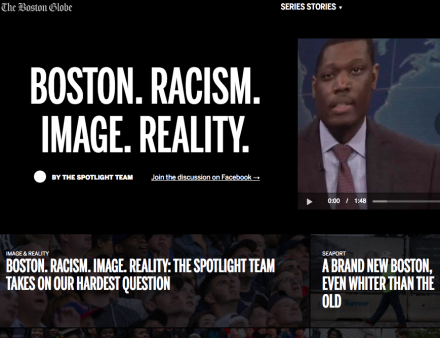By now you’ve turned the page on 2017. As the recent Boston Globe Spotlight Series on race, racism and reputation made clear, it is not so easy to leave the past behind. That is especially true here in Boston it seems, even decades after this city grabbed national headlines in the 1970s because of racially motivated violence that was part of resistance to court-ordered integration of public schools. It seems only one thing stayed the same during the intervening four decades: Blacks in this region are still disproportionately poor, sick, wary and lacking in real civic or economic power.

The story of Boston that is often told and well supported is one of innovation. Breakthroughs and achievements in intellectual, political, scientific and philanthropic life have been enormous. Social progress has in some important respects been a costly disappointment. It has been costly to those who are not connected to the main arteries that nourish life here, and costly to the city and region at large which does not reap the benefit of all the talent here or the talent that is staying away. We may be title-town but the title of the Globe series wasn’t “Race.Image.Reality” for nothing. Something has to change.
Thanks to the Globe series, debates are happening again, and some of them even respectful and productive. Who is to blame? What is to be done? How much can we ask of government? How big are we willing to dream?
If you are a CEO or in a top leadership position in your business or organization, this is the perfect time for a plan for expressing your values and making some bold choices. Do you have that kind of plan? Here are some elements that you might want to consider:
1. Get personally involved – Many leaders got where they are by being excellent at what they do, and this matter of talking about race and planning to address its intrusion into your work environment is not generally what they do. No longer. Get personally involved and take the opportunity the Globe has given you to take a look at your organization and make some changes. You probably needed an impetus and now you have one. This is not about your next hire or one new vendor or a page in the annual meeting agenda. This is a time tailor-made for leadership.
2. Make shared learning a part of the process – Shared learning does not mean getting everyone to see things your way. It is a non-hierarchal process. It requires personal commitment and growth from a group of people who have some level of trust. It will be nearly impossible to make change in your culture or your business operations if everyone can only play with the hand they already have. There are many ways to do this from the simple sharing of an article to arranging facilitated activities. Don’t groan or give in to the skeptics. Of course it can be awful and useless. Like everything you already do – it comes down to execution. Get the help you need to do it right.
3. Make the implicit explicit – Don’t just stumble into the conversation and drift from one action step to another. Take the message you want people to pick up from your subtle moves and state it loud and clear. The same goes for a high functioning and welcoming culture as for a troubled one. Declare what you stand for. Be specific. Then you can be held accountable and hold yourself accountable. Greatness requires all of that anyway. You can do it now or you can do it later once you “put some points on the board” but don’t wait too long. ‘Say what you mean and mean what you say’ is pretty time honored advice, right? Make a statement of your values and then as a team, systematically ask how each functional aspect of your business has the potential to make a contribution to greater equity and inclusion. Make your list, check it twice, and don’t fudge. It will become your action plan.
4. Build relationships – In the process of addressing racial issues in the work world, take the time to make new relationships inside and outside the company to help you find an authentic approach and give you insight and confidence. Once you are in a trust relationship with someone different from you and you get candor and encouragement, you will not be the same person and you will not be the same leader. The same will apply to each and every employee in their own context.
5. Make real change – However good you think things are, there are ways you can be part of making things measurably and materially better. The ideas are out there – in the community and in the company too. There is not a single part of the race conversation the Globe sparked that cannot be reached by some set of choices you can make at your company. There is an old debate about whether it matters that you are doing new things for the right reason or because you have no choice. At least in my opinion that conversation is a luxury that neither you nor the parties most at risk have at the moment. You can give your company or organization a distinct advantage and if that isn’t something to be rewarded for, then what is? It’s your move – and your opportunity. Seize it.
Andy Tarsy is Principal and Founder of Emblem Strategic, a public affairs and strategy consulting firm. This piece first appeared on the blog at EmblemStrategic.com on January 2, 2018.